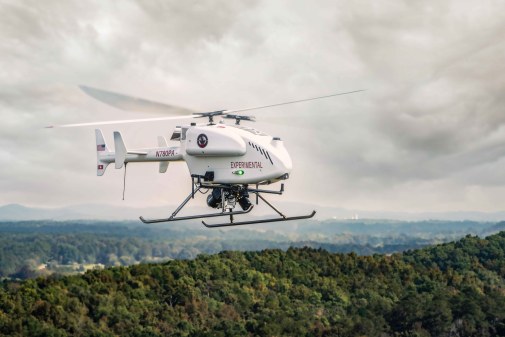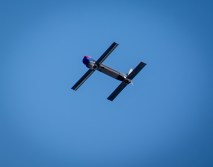Kitty Hawk moment for delivery drones
The first official U.S. civilian drone delivery is now in the history books. On July 17, with approval by the Federal Aviation Administration and under the supervision of scientists from Virginia Tech, drones proved they could deliver supplies to Americans in need, especially in remote areas.
In the small town of Wise, Virginia, a microcosm of the challenges of rural life in Appalachia, a research project dubbed “Let’s Fly Wisely” tested three categories of drone flights. NASA Langley piloted a long-distance (30 miles) flight using its single engine SR-22. That was followed by a mid-distance (1 mile) flight by Australian drone delivery company, Flirtey, using its proprietary hexacopter. And the final leg involved a “line-of-sight” mission with a tethered octocopter developed by my company, SEESPAN.
The remotely-operated deliveries brought vital prescription drugs and medical supplies to the nation’s largest free health clinic, held in Wise by Remote Area Medical.
Together, NASA and Flirtey proved that drones can deliver vital medical supplies to those in need; in doing so, they also proved that low-cost drone delivery can replace high cost traditional delivery methods in the public and private sectors.
Virginia Governor Terry McAuliffe described “Let’s Fly Wisely” as a “Kitty Hawk moment,” one that will go down in history as an important milestone in American aviation.
Beyond this outdoor aviation test in the Appalachian mountains, however, regulators in federal and state agencies remain on the horns of a dilemma: The FAA has allowed commercial drone pilots to fly the aircraft as far as they can be seen with the unaided eye, but it hasn’t resolved how to deal with the problem that free-flying drones often fly out of control.
That’s why the FAA insists on a 500-foot buffer distance from the “non-participating” public. A rogue drone flying at 50 mph can cover 500 feet in less than 7 seconds. Is that enough for a worried public?
That’s one of many difficult questions that must be dealt with. Among other questions: What if a drone is hacked and hijacked for criminal purposes? What if there are software glitches or radio telemetry failures that create runaway drones? What if there are pilot errors creating runaways?
Public officials are grappling with all of these issues simultaneously as drone adoption threatens to race ahead of society’s ability to mitigate those risks posed by drones operating in a modern society.
Businesses already see the advantages of deploying drones to displace current tools. A mere 18 months ago, Amazon CEO Jeff Bezos famously revealed that 85 percent of the packages the company ships weigh less than five pounds — an optimal payload for a delivery drone and Amazon’s plans for a delivery fleet under the moniker Prime Air.
Unlikely public advocates also emerged: In April 2014, two-dozen major U.S. media companies declared their support for the use of drones for newsgathering under no lesser protection than the First Amendment itself. Clearly, there is passion and motivation for drone use in all sectors of society.
While solutions are sought to reduce risks associated with free-flying drones, it’s possible that most public service drone tasks can be conducted with a tether to control the drone and mitigate risk. If accepted, the potential for tethered drones to improve public service at reduced cost and lower risk are abundant.
They could aid with asset inspection, surveys, emergency response, traffic efficiency, public security, police and firefighter support, image gathering under dangerous scenarios, and even the delivery of life-saving first aid or communications equipment (think radios or mobile phones) to accident victims that are difficult to reach in a crisis.
Tethers aren’t new. They have been used for decades by scientists to moor balloons and kites as they gather data from on-board sensors above.
Some companies have developed tethered systems that enable data transmission (CyPhy Works Inc., Danvers, Massachusetts) from the drone to the ground, or to transmit continuous power (Drone Aviation Holding Corp., Jacksonville, Florida) from the ground up to the drone.
Tethered systems, like SEESPAN’s, assure restraint by connecting the drone to a powerful electric ground-based system that protects the public. It stops runaway drones, prevents hacking, offers rapid retrieval — all while maintaining continuous flight of the drone. The tether is also visible.
Laboratory and flight tests at Virginia Tech demonstrated the tethered system:
- Has the strength to retrieve a drone back to its base even under worst-case scenarios (e.g., the constant force of a 70 mph wind);
- Can stop a runaway drone flying away at full throttle (40 mph); and
- Will rapidly retrieve a drone (e.g., 400 feet in 12 seconds).
The tether’s restraint also enables close proximity operation — allowing it to be flown within 100 feet from Governor McAuliffe as we interviewed him standing in front of the health clinic. Flying close offers substantial advantages: Smaller, lighter equipment can be used on-board to capture video, live-streaming data from the on-board camera via Wi-Fi is reliable and a smaller drone can be used to carry the load.
In 2012, Congress mandated FAA to integrate drones into the civilian airspace by 2015. That deadline will be missed; some experts say it will take years for solutions to be in place. In short, our ability to apply restraint and control over drone flight remain the biggest challenge prior to integration.
Perhaps what the “Let’s Fly Wisely” test also demonstrated is new goal for drones — for nothing new to happen. The drone planes and rotorcraft do their jobs as expected without incident, giving hope that one day these airborne robots will conduct our daily routine tasks at far lower costs, greater efficiency, and lower risk to society. That might seem boring to most.
Hopefully, soon, the next new “Kitty Hawk” moment will come where all things drones operate without incident, proving we are ready for full integration into the national air space.
Drones can be eyes in the sky searching for missing persons, first eyes on dangerous situations like hazardous material spills, or other major accidents, firefighter and police actions.
Even mundane tasks can be done more efficiently, at lower risk and cost, such as surveying roofs and exteriors of public buildings, and public outdoor assets, such as water supply systems or wastewater treatment facilities. With tethered control over the drone, federal and state chief information officers can have access to drone technology today without the risks that come with free-flying drones.
Mark Ryan is Founder, President and CEO, SEESPAN, Inc.




